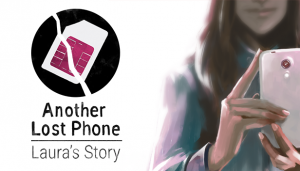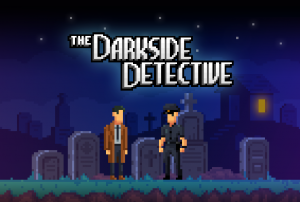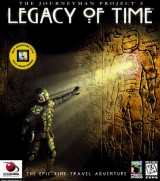Review for Another Lost Phone: Laura’s Story

NOTE: SIMULACRA has been rated and evaluated separately.
The burgeoning phone sim subgenre is one that really only seems to lend itself to very limited, rather passive gameplay. The majority of player activity consists of scanning personal details for clues to enable you to unlock more personal details in order to ultimately find the phone’s lost owner, or some version of the same. What’s interesting, then, is how Another Lost Phone: Laura’s Story and SIMULACRA take such a similar premise and develop it into two gaming experiences that, while not quite worlds apart, are at least different enough that each one offers something unique from the other.
Developed by French studio Accidental Queens, Another Lost Phone: Laura’s Story is the spiritual sequel to A Normal Lost Phone, meaning the two games do not follow the same plot or characters. The story sees you, the player, finding an abandoned phone lying on a train station bench and must now attempt to locate its owner by digging through text messages, emails, and image galleries. After discovering a frantic string of texts from Laura’s boyfriend who’s been desperately trying to reach her for days, the mystery of the eponymous young woman’s disappearance begins to unfold.
This game, available both on PC and mobile devices but optimally experienced on the latter for greater realism, sees you learning about some pretty serious issues that Laura had to deal with during the last few months saved in her message history. Nosily invading her privacy like this is never fully justified narratively, but look past the ethical aspect and before it’s all over, the designers have woven topics like bullying, isolation, and mental and physical abuse together to tell a mature story of one woman finding her inner strength to put an end to it.
Also following up their debut investigative phone title, the freeware release Sara Is Missing, Kaigan Games brings its first commercial offering SIMULACRA to PCs, phones and tablets. This too is a standalone game, another spiritual sequel, so no prior knowledge of the first is necessary to enjoy this one. Here again players take on the role of a protagonist who finds a phone, this time mysteriously abandoned right on their own doorstep. This isn’t so much a “lost phone” game as it is a “deliberately delivered phone” game. Who left the phone and for what reason is something that is discovered over the course of the story.
As the outset, it quickly becomes clear that Anna, the phone’s owner, has vanished without a trace, with her boyfriend Greg and best friend Ashley sending messages looking for her. But SIMULACRA soon evolves into more of a supernatural thriller, with some slight horror elements – jump scares, creepy noises, disquieting visuals. The game certainly seems to target a slightly different demographic, as it becomes more about the search for the missing girl rather than unearthing what happened to her in the past.
While the two approaches certainly share elements in common, Another Lost Phone is very focused on examining the written contents of Laura’s phone to figure out a series of passwords and other information to access locked applications. Each app that is unlocked gives new clues toward the next password that must be cracked, and each reveals further details of what happened to the missing young woman. In this way, Laura’s Story is fairly linear; the developers are leading you down a predetermined path, though it is up to you to put together the pieces of the puzzle and get the full picture.
While never frustratingly difficult, this game nonetheless offers some clever takes on the “password required” trope. Laura’s email and text messages are immediately available to read, but before you can even attempt to access her separate PowerJob instant messenger archives, internet connectivity has to be restored to the phone. Finding the right network, as well as the password for it, becomes the first task. In an interesting later twist on a similar puzzle, you have to match up pictures of Laura’s family, friends, and coworkers with their names, requiring some pretty detailed gumshoeing through all of her communiques.
SIMULACRA handles things a bit differently. Starting up the game brings you to Anna’s lock screen, and without the proper password there seems to be no way to even access the phone. Attempting to do something to get started causes the phone to suddenly buzz and crackle, with the image distorting and letters spelling out “Help me” appearing on-screen. Over the next few screen-taps, things get even creepier as the phone does what it wants, like all buttons suddenly displaying “Gallery”, leading you to a specific video, all the while emitting otherworldly sounds and feedback. Having no other choice, you get your true introduction to the game when playing the video, which features a frantically sobbing Anna scared out of her mind and begging whoever is watching it NOT to come after her.
The phone next does a system restore, which finally provides access to some apps. Text messages are immediately available, as are Anna’s web browser and Spark dating profile. Just like in Another Lost Phone, some things are gated behind a password here too, such as Anna’s email and her Jabbr social media account. In general, however, SIMULACRA is less focused on puzzles, and much of the puzzle content it does have is on the simpler side. For example, some archived messages are corrupted, and can be fixed by putting the words in them in their proper order.
SIMULACRA isn’t just about reading email and text message archives, though. In fact, the bulk of the gameplay revolves around actively communicating with the important people in Anna’s life: Greg, Ashley, and Taylor, a possible love interest. The messaging app on Anna’s phone very much works, and players must frequently text and, despite being a silent protagonist, even take calls from the other characters assisting in the search for Anna. Text exchanges usually give you multiple response options to further the conversation the way you see fit, with the other party then responding in turn. Receiving a phone call is akin to a prerecorded audio file; the conversation is sadly one-sided, usually citing bad reception as a reason for the lack of player participation in the exchange. It is possible to make outgoing calls, but the majority of these end in a loud burst of static and connection issues, with a few getting through to voicemail inboxes.
This is the key difference between the two games: while Another Lost Phone is primarily a reactive investigation to find out what has already happened, SIMULACRA makes players the focal point of a very much ongoing investigation, and at multiple moments the cooperation between characters really helps to drive home a sense of realism, despite the supernatural threat that seems to also be present at every step. Both games put heavy focus on story, but SIMULACRA sacrifices some of its puzzles in favor of more player agency, whereas Laura’s Story essentially gives players a device that’s already cut off from the outside world to deal with, injecting more cerebral puzzle-solving instead. Still, the realistic narrative in Laura’s Story, for me, edged out the horror movie tropes and abstract ending of SIMULACRA, even if just slightly.
Not only are the two games different tonally, each has quite a distinctive visual presentation, despite both of them simply emulating a phone screen. Each developer has stuck to a very similar design aesthetic as their previous game. Another Lost Phone has a hand-drawn interface with, more importantly, similarly hand-drawn art assets taking the place of the photo gallery. This is particularly relevant as several of the pictures contain clues to solving some of the puzzles. Although the game incorporates heavy narrative themes into its mix, its art style and bright, calming color choices provide a more balanced and enjoyable puzzle-solving atmosphere.
Equally integral to establishing a welcoming mood in Laura’s Story is the excellent, albeit small, list of licensed music. The tracks can be accessed via the game’s built-in music interface, or simply be allowed to play in the background to make for a nice setting in which to spend the three or so hours it takes to complete the game. One song in particular, Khruangbin’s “White Gloves,” is a standout and got stuck in my ear for days afterward. There were times, however, when the music player stopped on me altogether, rather than continuing to play on a loop, though it’s not as if restarting it manually is very difficult.
SIMULACRA takes an entirely different tack with its presentation. The goal here is realism, and to this end real actors were used in images and video clips, accompanied by voice-over work. It’s simple stuff, really, though it feels more natural and pays off in spades to cement Anna’s friends and acquaintances as real people in your mind. Sadly, while some of the actors do a fine job, a few individuals are very hit-or-miss, with emphasis on the miss, delivering too many line readings that sound boundlessly exaggerated and unnaturally cadenced. There are also more than a couple of wonky translations. But there are some cool visual touches here and there, like the way Laura’s phone background changes subtly throughout the game.
Even with less puzzle challenge, SIMULACRA definitely has the edge when it comes to play time: it takes about five hours to reach the credits the first time, and the game has multiple endings, both bad and good, to encourage replays. It also helps that text message conversations typically have multiple response options. There is just a greater breadth of content to discover here. There is even an in-phone list of objectives to keep players on track over the course of multiple gaming sessions.
Both Another Lost Phone: Laura’s Story and SIMULACRA undeniably appeal to one's voyeuristic side and feel like guilty pleasures: the gameplay isn’t particularly deep in either, but they’re easy to get in and out of, and hook you with a kind of “just one more text message” feeling. With the experience of previous games under their respective belts this time, the developers have been able to craft some engaging puzzles and stories that go beyond throwaway fare. They may be works of fiction, but the human drama and tragedy they shine their lights on often feel as if they’re based on someone’s very personal, very honest real-life account. With production values that include live actors in one game and well-chosen licensed music in the other, there are many worse ways to while away a couple afternoons. My interest, for one, is piqued for more of these pseudo-reality fixes.
Our Verdict:
Another Lost Phone doesn’t look like much and its linearity ensures a short play time, but it has enough gameplay and story depth with important themes to be a pleasant experience while it lasts.

























